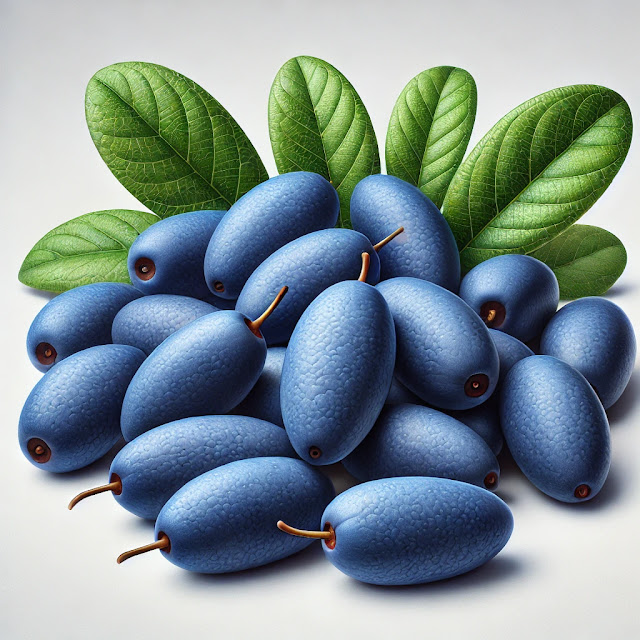Nectarine: The Smooth and Juicy Summer Fruit Bursting with Health Benefits
Overview:
Nectarines are a smooth-skinned variety of peach with a vibrant reddish-yellow color and a juicy, sweet flavor. This refreshing fruit is a favorite during summer and is often enjoyed fresh, in salads, or as a dessert ingredient. Nectarines not only offer a delightful taste but are also packed with essential nutrients that contribute to overall health.
Calories and Key Nutrients (per 100g):
A 100g serving of nectarine contains about 44 calories, making it a low-calorie fruit. Nectarines are rich in vitamins A and C, both of which play an important role in supporting the immune system and promoting healthy skin. They also contain dietary fiber, potassium, and small amounts of other B vitamins. When compared to peaches, nectarines have a similar nutrient profile but are often slightly higher in vitamin C, which contributes to their immune-boosting properties.
Health Benefits:
Nectarines provide several health benefits, thanks to their rich vitamin and mineral content. Vitamin C acts as an antioxidant, protecting the body from oxidative stress and boosting the immune system. The high fiber content supports digestion and promotes gut health, helping to prevent constipation. Nectarines are also a great source of vitamin A, which is essential for maintaining good vision and healthy skin. The potassium in nectarines helps regulate blood pressure, supporting heart health.
Proper Consumption Methods:
Nectarines are best enjoyed fresh. Simply wash the fruit, slice it, and remove the pit to enjoy a juicy snack. Nectarines can also be added to fruit salads, paired with yogurt or cottage cheese, or blended into smoothies for a refreshing summer drink. In addition, nectarines can be grilled or roasted to bring out their natural sweetness, making them a versatile ingredient for both sweet and savory dishes.
Tasty Ways to Eat Nectarine (Recipes):
One simple yet delicious way to enjoy nectarines is to make a nectarine salsa. Dice fresh nectarines and combine them with lime juice, cilantro, and red onion for a sweet and tangy topping for grilled fish or chicken. Another option is a nectarine and almond tart, where sliced nectarines are baked in a flaky crust with a sweet almond filling. For a refreshing drink, blend nectarines with ice, mint, and a splash of lime juice for a thirst-quenching summer smoothie.
Cautions When Eating Nectarines:
Nectarines are generally safe to eat for most people, but their high fiber content can cause digestive discomfort if consumed in large quantities. Additionally, individuals with stone fruit allergies, such as those allergic to peaches or plums, should exercise caution when eating nectarines. It’s also important to avoid eating the pits, as they contain small amounts of cyanogenic compounds, which can be harmful in large amounts.
Comparing Nectarines to Other Fruits:
Nectarines are often compared to peaches due to their similar flavor and nutrient profile. However, nectarines have a smoother skin and a slightly firmer texture than peaches. While both fruits are rich in vitamin C and fiber, nectarines typically offer a bit more vitamin A, which supports vision and skin health. In comparison to plums, nectarines are slightly sweeter and contain more vitamin A, while plums are higher in certain antioxidants like anthocyanins.
Who Should Eat Nectarines and Who Should Avoid Them:
Nectarines are ideal for individuals looking to boost their vitamin C intake and support heart health due to their potassium content. Athletes can benefit from nectarines as a hydrating snack that helps replenish electrolytes after exercise. However, individuals with allergies to stone fruits or those who are sensitive to high-fiber foods should consume nectarines in moderation to avoid any adverse reactions.
Interesting Stories or Facts:
Did you know that nectarines are actually a type of peach? The main difference is that nectarines have smooth skin, while peaches have fuzzy skin. Historically, nectarines were often considered a more refined fruit and were grown in European orchards for royalty. Today, they are enjoyed worldwide, especially during the summer months when their sweet and juicy flavor is at its peak.
Nectarine Culture Around the World:
In France, nectarines are often used in pastries, such as tarts and galettes, to highlight their natural sweetness. In Italy, nectarines are commonly paired with prosciutto and fresh mozzarella in salads for a delicious balance of sweet and savory flavors. In the United States, nectarines are a popular addition to fruit salads, smoothies, and yogurt bowls, especially during the summer.
Scientific Research on Nectarines:
Research has shown that the antioxidants in nectarines, particularly vitamin C, may help reduce the risk of chronic diseases such as heart disease and certain cancers. Nectarines’ high fiber content is also linked to improved digestive health and a lower risk of gastrointestinal disorders. Additionally, the beta-carotene in nectarines supports eye health and may help reduce the risk of age-related macular degeneration.
Conclusion:
Nectarines are a delicious and nutritious fruit that offers a range of health benefits, from supporting immune function to promoting healthy digestion. Whether eaten fresh, added to salads, or used in baking, nectarines are a versatile and enjoyable addition to any diet. However, as with any food, it’s important to consume them in moderation and be mindful of any potential allergies.
This information may not be entirely accurate, so if you have any medical conditions, please consult a doctor before consuming nectarines.











Comments
Post a Comment